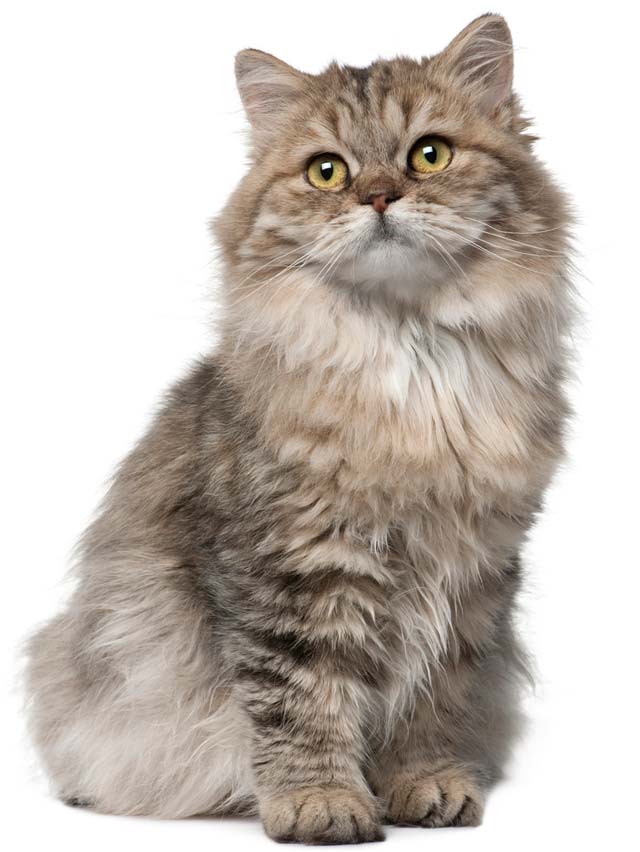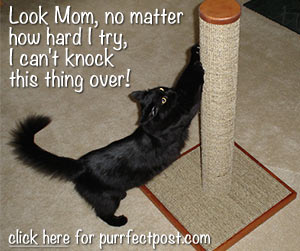Feline Lower Urinary Tract Disease

Diseases of the lower urinary tract occur frequently. The bladder and urethra (the latter carries urine to the outside from the bladder) are affected most commonly. The term most often used to describe problems of these structures is feline lower urinary tract disease (FLUTD). This term (formerly feline urologic syndrome or FUS) is really a group of diseases that show remarkably similar clinical signs, although their inciting cause differs. Therefore, although a majority of cats suffering from FLUTD will strain and make frequent attempts to urinate, have blood in the urine, urinate in strange places, or lick excessively at the urinary opening, it is important to realize that these signs may represent different diseases with different causes.
Causes of FLUTD in Cats
The key to successful treatment of FLUTD lies in the veterinarian’s ability to accurately determine the cause. In young, generally healthy cats, the most common causes of FLUTD in decreasing order are:
- Sterile interstitial cystitis
- Bladder stones +/- urethral blockage with stones as they are passed
- Urethral blockage with plugs of mucous-containing material
- Urinary tract infection
- Urinary tract cancer
- Trauma to the urinary tract
By far, the most common cause of FLUTD is sterile interstitial cystitis, which has also been termed idiopathic lower urinary tract disease (IFLUTD) because no apparent cause for the serious bladder inflammation can be isolated. Greater than 50% of cats exhibiting signs of frequent urination and bloody urine will have no identifiable cause despite extensive diagnostic testing, and when no cause is evident, it is termed “idiopathic.” Since optimal treatment of these diseases is specific to the inciting cause, idiopathic cases can be a challenge to treat.
Signs of FLUTD
FLUTD will often result in frequent attempts to urinate, and cats may urinate in odd places around the house. Many will choose cold, slick surfaces to urinate on such as bathtubs and sinks. Many will have blood in their urine and may pass very small amounts. These cats are not blocked and probably urinate frequently due to bladder discomfort. Sterile interstitial cystitis is a research model for interstitial cystitis (IC) in women.
Diagnosis of FLUTD
Your veterinarian will take a full history and do a complete physical examination. A sample of urine will be tested for abnormalities. X-rays and blood tests may be performed.
Bladder biopsy in cats with FLUTD shows increased sensory nerve numbers in the bladder, thickened wall, and inflammation. There is also a loss of the protective mucus lining of the inside of the bladder which normally protects against injury from concentrated urine. In both cats and people, the condition waxes and wanes and may worsen during stressful periods.
Treatment of FLUTD
An important thing to know about idiopathic FLUTD is that most cases resolve eventually without treatment. Several treatments have been used in cats, including anti-inflammatory drugs, anti-anxiety medication, and treatment that enhances the mucous protective layer of the bladder.
Male cats with FLUTD are prone to developing urinary blockages, which are an emergency situation requiring immediate veterinary care.
The recommended therapy will differ with each case. However, some general recommendations to help prevent recurrence of episodes can be made, including:
- Feed diets that are recommended by your veterinarian. Some cases of FLUTD can be partially managed with a prescription diet. It is important not to mix in other foods, give kitty treats not approved by the veterinarian, or allow the cat access to another household pet’s food (this includes dog food).
- Increase water consumption. Research has shown that cats that eat primarily canned food have a reduced incidence of blocked urethra. Make sure clean, fresh water is available at all times.
- Provide an adequate number of litter boxes. The general rule is one more than the number of cats in the household. Keep litter boxes really clean.
- Reduce stress. Although most cats are so laid back that we perceive them to be stress free, they are actually very sensitive to changes in their environment. A move, a new person in the house, a new pet in the home, boarding, and even the addition of new furniture can trigger a stress response.
You May Also Like These Articles:
Tips for Good Litter Box Cleaning
Tips for Avoiding Litter Aversion in Cats
Cat Not Using Litter Box? Inappropriate Urination in Cats
Five Reasons Cats Urinate Outside of the Litter Box
Notice: Ask-a-Vet is an affiliated service for those who wish to speak with a veterinary professional about their pet's specific condition. Initially, a bot will ask questions to determine the general nature of your concern. Then, you will be transferred to a human. There is a charge for the service if you choose to connect to a veterinarian. Ask-a-Vet is not manned by the staff or owners of CatHealth.com, and the advice given should not delay or replace a visit to your veterinarian.






